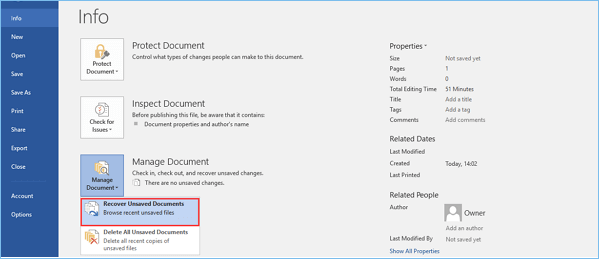

Main article: History of Microsoft Word Origins
#MICROSOFT WORD FILE LOCATION WINDOWS 10 MAC OS#
Subsequent versions were later written for several other platforms including IBM PCs running DOS (1983), Apple Macintosh running the Classic Mac OS (1985), AT&T UNIX PC (1985), Atari ST (1988), OS/2 (1989), Microsoft Windows (1989), SCO Unix (1990), and macOS (2001).Ĭommercial versions of Word are licensed as a standalone product or as a component of Microsoft Office 365, or Microsoft 365 Premium subscription, Windows RT or the discontinued Microsoft Works suite. It was first released on October 25, 1983, under the name Multi-Tool Word for Xenix systems.

#MICROSOFT WORD FILE LOCATION WINDOWS 10 SOFTWARE#
Microsoft Word is a word processing software developed by Microsoft. If you can't get into the habit of saving manually, automatic backups are for you./ December 12, 2021 57 days ago ( ) For me, it just makes sense to turn off the feature. This makes the backup file of minimal worth to me, since it only represents a version of my document that is five to seven minutes old. If I have automatic backups turned on, that means I am deleting the old backup file and creating a new one every five to seven minutes. Why? Consider my writing scenario: When working on a document, I typically save every five to seven minutes I have just trained myself to do that. If you save documents regularly, there may not be a need for automatic backups. This behavior of Word in regard to backup documents naturally brings up another point.

As a result, people tended to choose longer backup intervals. Years ago, when hard drives were small and slow and network connections were slow too, the pause while writing the backup file was quite noticeable. The interval you chose is a tradeoff between the momentary inconvenience when the file is locked while the backup is written to disk. You define an interval, say every 5 minutes, and Word saves the document for you at that interval. There is another type of automatic backup referred to as AutoRecover. The result is that no matter how many times you save, there will only be two files, and they will always be in the same directory. When you again save the document, the existing WBK file is deleted, the existing document file is renamed to WBK, and the document is saved again. Since Word only does a rename to create the backup file, it is not possible to specify a different location for that file-both the document and its backup are stored in the same directory. This backup copy is nothing more than a copy of the file you opened, before you start editing it, renamed with a WBK extension.


 0 kommentar(er)
0 kommentar(er)
